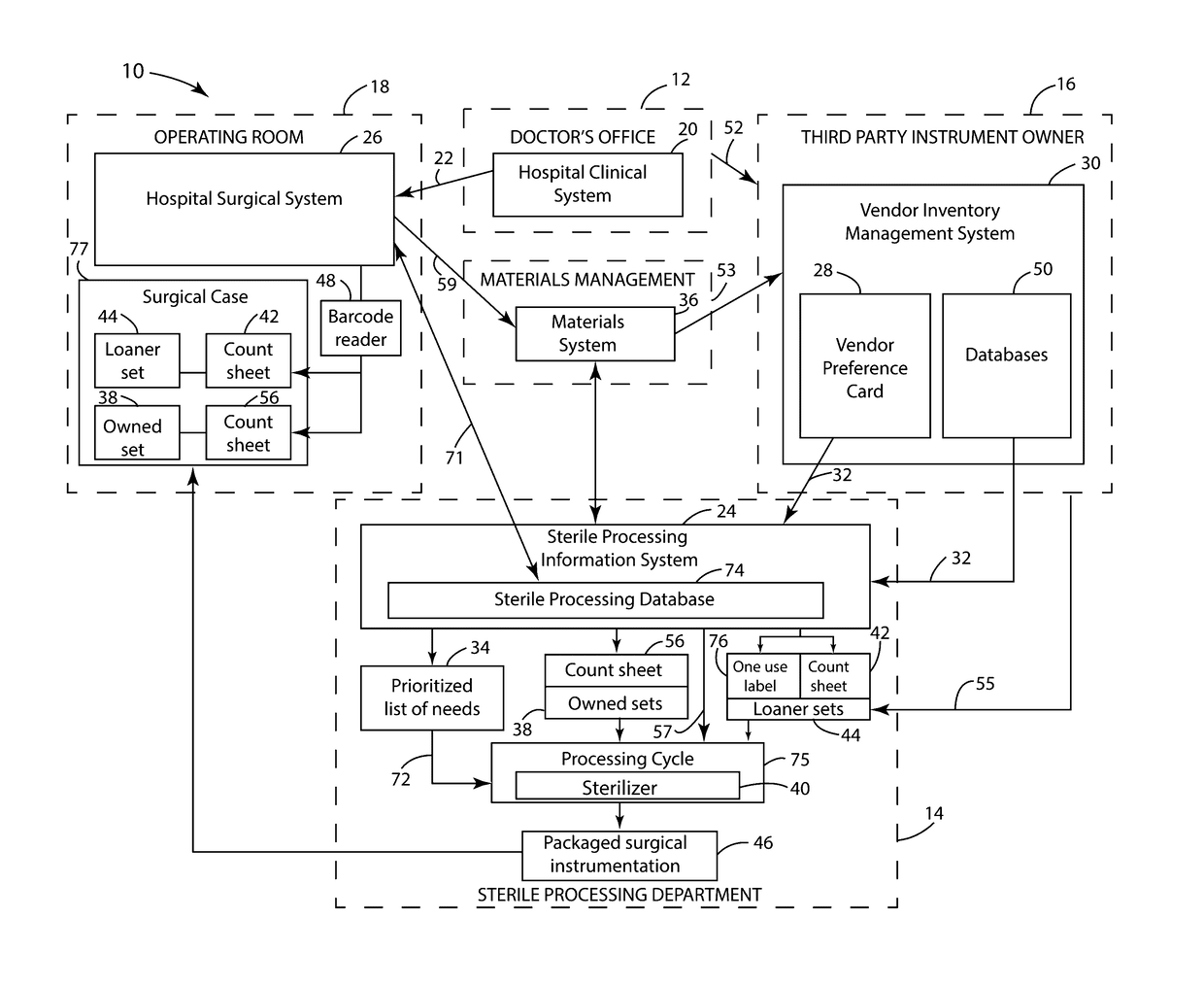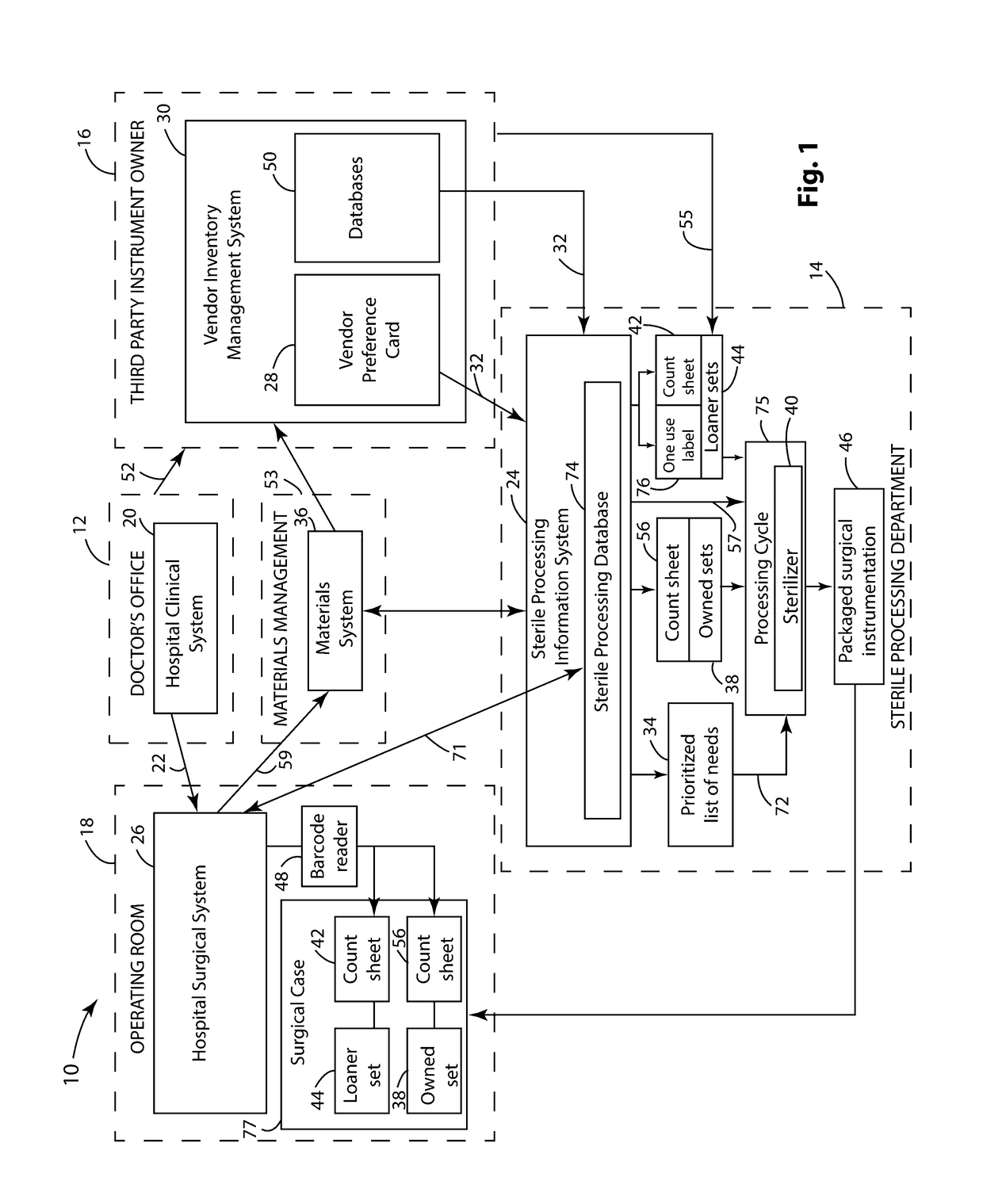Systems and Methods for Tracking Surgical Inventory and Sterilization
a technology for applied in the field of tracking surgical inventory and sterilization, can solve the problems of inability to purchase or store all of the necessary instruments specific to the procedure or implant, and the “preference card” system is typically limited to those instruments and/or consumables,
- Summary
- Abstract
- Description
- Claims
- Application Information
AI Technical Summary
Benefits of technology
Problems solved by technology
Method used
Image
Examples
Embodiment Construction
[0035]FIG. 1 is a system diagram that depicts an exemplary instrument management system 10 for implementing the invention. The exemplary instrument management system 10 connects a doctor's office 12, a sterile processing department (SPD) 14 in a hospital, a third party instrument owner 16, the hospital's materials management department 53, and the operating room 18 to schedule, acquire, and manage surgical instrumentation, including implants and / or consumables required for surgery.
[0036]In the doctor's office 12, one or more physicians use a hospital clinical system 20 to schedule a surgery. The hospital clinical system 20 may be a hospital records and scheduling system as provided for example by Cerner Corporation or Epic Systems Corporation. The hospital clinical system 20 creates a hospital preference card that includes information needed to schedule and prepare for a surgery. The hospital preference card identifies the needed operating room or rooms, personnel required for the s...
PUM
 Login to View More
Login to View More Abstract
Description
Claims
Application Information
 Login to View More
Login to View More - R&D
- Intellectual Property
- Life Sciences
- Materials
- Tech Scout
- Unparalleled Data Quality
- Higher Quality Content
- 60% Fewer Hallucinations
Browse by: Latest US Patents, China's latest patents, Technical Efficacy Thesaurus, Application Domain, Technology Topic, Popular Technical Reports.
© 2025 PatSnap. All rights reserved.Legal|Privacy policy|Modern Slavery Act Transparency Statement|Sitemap|About US| Contact US: help@patsnap.com



